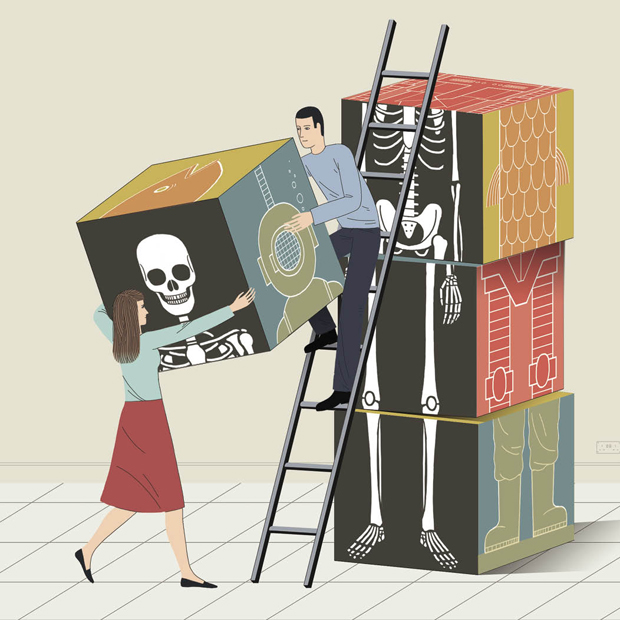Health cash plans were introduced in the 19th century to help employees with the cost of everyday healthcare, but today they are viewed as a key component of an employer’s overall health and wellbeing strategy.

If you read nothing else, read this:
- Health cash plans can be used to support an employer’s wellbeing strategy.
- The wide range of healthcare benefits available through a cash plan makes them appeal to all members of a workforce.
- A cash plan sits well alongside, not in place of, other healthcare benefits such as private medical insurance.
Wellbeing programme launches were commonplace in 2013 as employers continued to take a more preventative approach to employee health and wellbeing and try to combat sickness absence in the process.
For example, law firm Norton Rose Fulbright hosted a wellbeing event as the first phase of its new health and wellbeing strategy, which is designed to boost employees’ energy levels and reduce sickness absence by increasing take-up of its existing healthcare benefits, such as bikes for work and corporate gym membership.
Employee Benefits’Healthcare research , published in June 2013, found that more than half (64%) of employers cited the desire to improve overall employee wellbeing as a reason to buy or continue to offer healthcare benefits.
Diversity of services
The diversity of preventable healthcare services available through health cash plans, including optical and dental, make them an invaluable component of employers’ healthcare benefits.
Jennie Doyle, marketing manager at Health Shield, says: “Because health cash plans address everyday healthcare issues, employees don’t have to be ill to claim. It’s about employers getting to the problem before it gets any worse.
“The fact that people are using our cash plans for physiotherapy or cognitive behavioural therapy, we see as being very important in terms of the way the market is changing.”
Long-term needs
The wide spectrum of benefits offered through health cash plans can cover employees’ short- and long-term healthcare needs.
In the short term, optical and dental benefits can help staff take responsibility for managing their own health and wellbeing, while long-term benefits may include treatments such as chiropody. Kevin Rogers, chief executive of health cash plan provider Paycare, says: “If an employee has a chronic illness, such as diabetes , then a chiropody benefit [because diabetes can affect the feet] helps them with their ongoing treatment and maintaining that care.”
The everyday healthcare perks that a cash plan can offer are complemented by benefits that address wellbeing, such as physiotherapy, acupuncture, homeopathy and counselling services. “So, it’s a low-cost benefit that has real tangible value immediately,” says Rogers.
Preventative measures
Cash plans can also help staff address underlying health issues before they become more serious.
David Castling, commercial sales manager at healthcare insurer Engage Mutual, says: “Although PMI (private medical insurance) covers things that are much more significant than you would ever see covered on a cash plan, it’s a very reactive need.
“The potential benefit of a cash plan is that it picks up smaller [health issues] more regularly. There is an inferred benefit of doing that earlier on, in that it might help prevent some of those more serious things coming to a head.”
Cost-effectiveness
But cost-effectiveness is one of the main attractions of health cash plans as far as employers are concerned. In this age of austerity, pay rises have often taken a back seat and many employers cannot afford to offer all staff extensive medical benefits.
Castling adds: “We’ve had employers that haven’t been able to afford a pay increase and have found that putting in a cash plan is a way of rewarding staff while still offering something. Employers are looking for a method of trying to improve staff health and wellbeing, with a view to reducing absenteeism or increasing productivity.”
The relatively low cost of health cash plans also enables employers to offer the benefit to all employees, rather than just high earners or senior staff, as is the case with PMI.
This wide appeal makes cash plans a good tool with which to engage employees with a health and wellbeing programme.
Chris Evans, senior consultant at Buck Consultants, says: “Cash plans are simple to understand. This helps with the communication and promotion of [an employer’s] health and wellbeing strategy: it’s a consistent message for all. The wider spectrum of benefits also has wider appeal to employees, enhancing their perceived value of the benefit.”
A well-disciplined and worked-out communication programme can help to engage staff with a cash plan, Evans adds. “This can really make an impact in terms of the workplace wellness message, and that can be a very useful gap filler for many employers which are struggling to get that message out to employees,” he says.
So, the health cash plan has three advantages: it helps to engage employees and support their healthcare needs; it minimises organisations’ healthcare benefits costs; and it enables employers to create a level playing field for staff healthcare benefits.
Complementing PMI
A trend among employers and cash plan providers is to use cash plans to complement the benefits offered through a PMI scheme, but not to replace the medical insurance altogether.
Buck’s Evans says some employers have considered using a cash plan as a way of reducing PMI spend, and some cash plan providers enable employees to offset their PMI excess. But Evans says: “There are potential gaps between where the excess is applied and the cash plan pays out, and challenges on seamless administration.”
Healthcare strategy integration
Responsibility for using a cash plan rests with employees, rather than employers, because staff are responsible for sourcing a healthcare practitioner, paying for treatment and then reclaiming the cost through the cash plan. Nevertheless, cash plans can be an important part of an organisation’s overall healthcare and wellbeing strategy.
But before employers introduce a health cash plan, they must first consider the objectives of their health and wellbeing strategy, to identify where a cash plan will sit and whether it will be a good fit for its workforce.
Read also David Batman: How to create a successful health and wellbeing strategy
Breakdown of health cash plan benefits paid by value and number of claims in 2012
| Proportion of total value of benefits paid (%) | Total category benefit paid (£000s) | Total number of claims (thousands) | Average benefit paid per claim (£) | |
|---|---|---|---|---|
|
Optical |
30.6 |
100,335 |
1,185 |
85 |
|
Dental |
28.0 |
91,585 |
2,405 |
38 |
|
Physiotherapy and other practitioner therapies[1] |
19.4 |
63,420 |
1,870 |
34 |
|
Hospital stay[2] |
13.2 |
43,370 |
280 |
155 |
|
Others |
8.8 |
28,650 |
310 |
93 |
|
Total |
100 |
327,360 |
6,050 |
54 |
Source: Health Cover UK market report 2013, Laing and Buisson, published July 2013
Case study: Health cash plan helps Furlong Flooring reduce staff absence

Furlong Flooring has reduced its sickness absence levels by introducing a health cash plan.
The carpet manufacturer has reduced sickness absence from about 5% to just under 1% after implementing the cash plan, provided by Health Shield, just over two years ago.
The organisation also introduced the plan to help maintain staff wellness.
Peter Jarrett, managing director at Furlong Flooring, says: “I believe in working with employees to get the best out of them.
“The cash plan was something we needed to do that wouldn’t necessarily cost a great deal, but would be a good benefit.”
The employer funds the cash plan. All 50 of its employees receive a basic level of cover, and managers receive a higher level.
Staff can increase their cover to include family members.
Furlong Flooring also offers family cover, or a higher cover level, as an employee incentive.
Case study: Health cash plan supports Briggs Equipment’s manual workers

Materials handling equipment distributor, Briggs Equipment, has found that a health cash plan is highly valued by its staff.
The organisation inherited the health cash plan, provided by Paycare, after an acquisition in 2006 and continued to offer it to staff. Head of HR, Alison Field, says: “We believe it is a good benefit to offer our employees.”
Many jobs at the organisation involve physical work, and Briggs has found the health cash plan can aid employees’ wellbeing.
“We have very physical jobs for the majority of our employees, so to have a health cash plan to help them back into work for different things is very beneficial,” says Field.
Briggs contributes to the cost of the cash plan at a certain level for all staff, and employees have the option to add family members to the plan or increase the level of cover.
Viewpoint: Nick Bacon: Health cash plans can help support staff in an economic downturn

Employers have a statutory duty of care to protect the health, safety and welfare of their employees. Beyond this statutory duty, many employers recognise that improving staff health and wellbeing has significant benefits, such as lowering the high costs of sickness absence and improving on-the-job performance.
Workplace schemes to improve health and wellbeing, such as smoking cessation and healthy eating, are good for staff and organisational performance: a genuine win-win.
Effective health and wellbeing strategies require managerial commitment to develop and deliver an integrated plan of action to improve health and wellbeing. Action plans should be developed following careful health risk assessments. The impact of these actions on staff health should be assessed as part of an overall risk management strategy.
Aim of the strategy
The aim of the strategy should be to improve staff health and wellbeing in the long term, and so improve on-the-job performance. Improving staff health and wellbeing has a positive influence on staff behaviour, work attendance and on-the-job performance.
Health cash plans are a cost-effective way to support staff wellbeing in difficult economic conditions. Such plans are low cost and provide a degree of financial security, peace of mind and facilitate prompt treatment.
Employers may also benefit from employee assistance programmes, helplines and discounted gym membership for staff at no extra charge. Health cash plans may also encourage staff to take some responsibility for their health, promote regular attendance at health checks, and help modify staff behaviour and reduce health risk factors.
Nick Bacon is professor of human resource management at Cass Business School